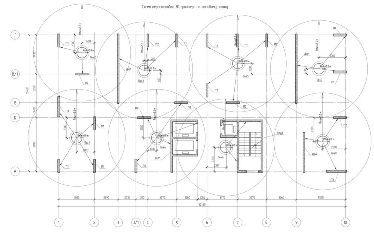The technology developed by Perm scientists aims to reduce the number of unfinished construction projects.
An article with the results has been published in the journal "Modern Technologies in Construction: Theory and Practice." The research was conducted as part of the strategic academic leadership program "Priority 2030."
Monolithic construction has gained significant popularity due to its advantages. This technology allows for the construction of high-rise buildings in an average of one year, which is considerably faster compared to brick houses. The sturdy monolithic frame ensures high reliability and durability of the buildings.
Currently, additive technologies have not yet been widely adopted in construction, as several issues in materials science (selection of concrete mix compositions for printing), automation, and construction robotics remain unresolved. However, the technical implementation of 3D printing is possible when erecting permanent formwork for vertical monolithic structures.

Formwork is a supporting structure made of wood, metal, or other materials, which is necessary to give monolithic concrete structures specific parameters — shape, geometric dimensions, and spatial positioning. For example, it is used to create walls, ceilings, and slabs. Formwork work is carried out at every stage of building construction, starting from the foundation and ending with the roofing. The traditional technology involves the use of removable reusable formwork, which is dismantled after the concrete structure has gained sufficient strength.
Scientists from Perm Polytechnic propose using a new construction technology with permanent formwork produced using additive technologies. This approach is illustrated with the example of a 25-story residential building. The polytechnic specialists selected materials and equipment for 3D printing, designed vertical load-bearing structures, and developed a work production scheme. The results of using the new technology were compared to the traditional one in terms of duration and cost.
The base for printing is a heavy fine-grained concrete based on cement, which includes fine aggregate, mineral additives, steel microfibers, shrinkage-reducing chemical additives, and setting time regulators.
It is crucial to select the right equipment for 3D printing, as it directly affects the work execution scheme, costs, timelines, and quality. The scientists from Perm Polytechnic chose a lightweight mobile construction 3D printer that is mounted on a movable platform with remote control and moves on its own tracked chassis. Starting from a specific point, layer-by-layer printing of several formwork elements is carried out, which, after hardening, are filled with concrete mix using a tower crane.
"We compared the duration and cost of constructing the building frame using traditional and proposed technologies. For the calculations, we created work production schedules and took into account the market cost of renting and purchasing the formwork and printer set, labor payments, and total material expenses. The cost of construction using a 3D printer is practically the same as the traditional technology even considering its purchase. However, its use allows for a 10 percent acceleration in the completion times," says Stepan Leontyev, Associate Professor of the Department of Construction Engineering and Materials Science at PNIPU, Candidate of Technical Sciences.
The technology for erecting the monolithic building frame presented by PNIPU scientists, along with the designed work schemes with the 3D printer, has significant potential for practical application in the construction industry.